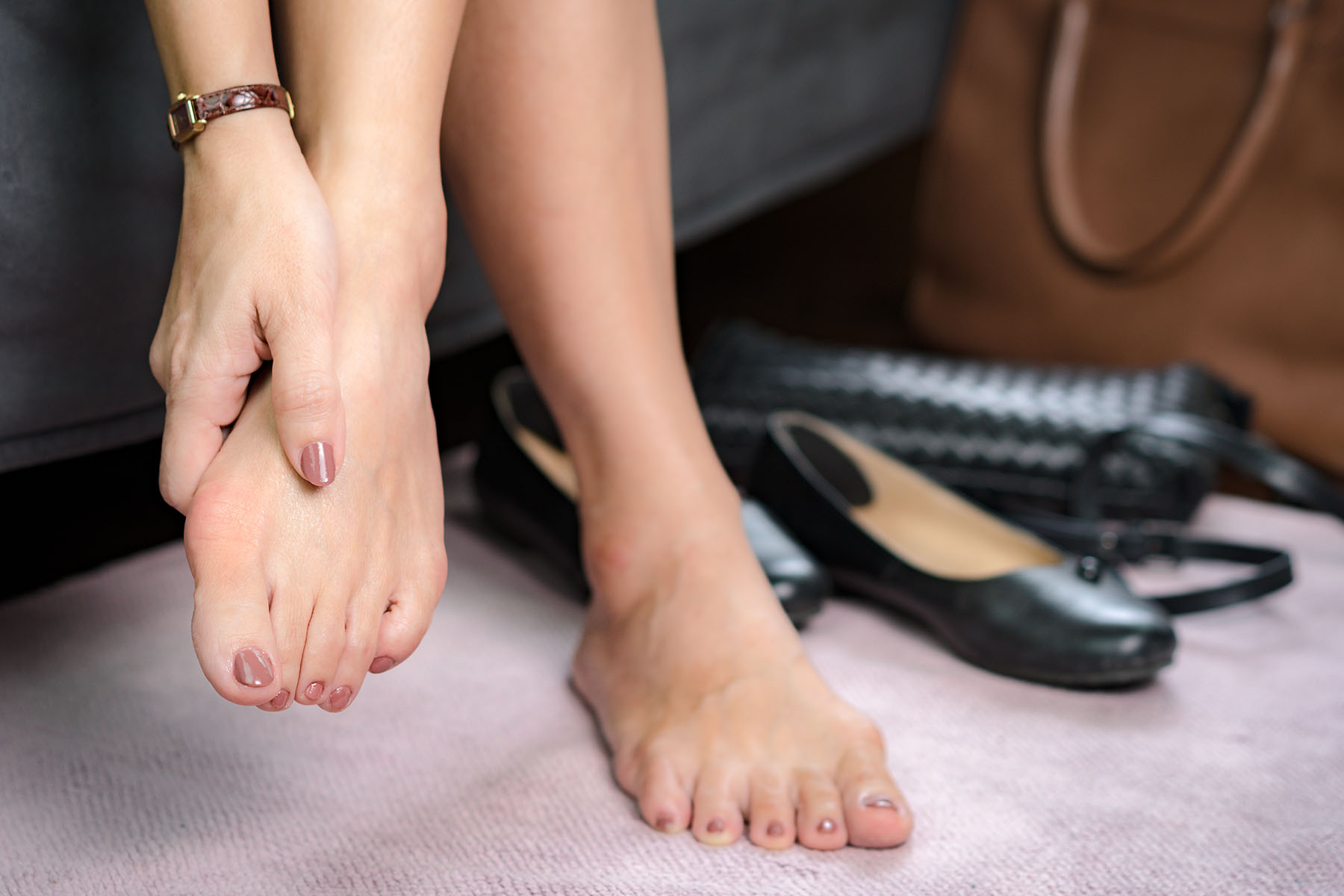When Bunions Are a Bother

Your feet are hard workers. They support your entire body and keep you on the move. With years of weight and pressure on the foot and toe joints, they become more susceptible to wear and tear as you age.
As a result, an estimated one in three adults aged 65 and over has bunions (hallux valgus) on one or both feet. But young adults can also inherit foot structures that cause bunions.
The telltale sign is a painful, bony bump on the outer edge of the base of the big toe joint.
“It’s not possible to have a bunion without the bony bump,” says Jason Levine, D.P.M., a podiatrist with the University of Miami Health System. “It is possible, however, to have a bump that appears to be a bunion but may, in fact, be soft tissue.”
Other bunion symptoms include:
Deformities
The big toe leans toward the other toes. The foot widens. The joints of the other toes bend in the middle or push against each other, causing hammer/claw toes.
These deformities can affect your walking form and increase the risk of falls.
Pain
Not all bunions are painful (even large ones). But they often cause pain in the big toe joint (metatarsophalangeal joint) and on the bottom of the foot — with or without tight shoes, when walking, standing, or resting. The affected toes can feel sore to the touch. This pain may come and go or become chronic.
- The big toe joint may become warm, swollen, inflamed, or osteoarthritic.
- Nerve damage in the big toe can cause numbness or difficulty moving the big toe.
- Skin changes: The bunion looks red and/or shiny. The skin on the bottom of the foot thickens and hardens; calluses and corns can form.
These symptoms can be mild to severe. Some people with bunions don’t experience any pain or additional symptoms.
Are your shoes to blame?
Your favorite heels, pointy flats, tight boots, and ill-fitting sneakers may cause a bunion to develop or worsen the pain of an existing one. But, shoes aren’t the only culprits.
Many people wear tight shoes for decades and never develop bunions. Others consistently wear wider, orthopaedic, or open-toed shoes and still get them.
Additional causes of bunions include:
- Genetics
- Flat feet (having no visible foot arch)
- Rheumatoid arthritis
- Weak connective tissue (more common in women)
- Short Achilles’ tendon
- Short calf muscles
Is that bump a bunion?
It’s not always easy to tell the difference between a mild bunion and a normal big toe. “But, foot pain is never normal and warrants an evaluation,” says Dr. Levine.
Start with your primary care physician. Your doctor will need to examine your feet and observe how they move as you stand, walk, and sit. They will examine the toe joints, how the big toe appears and moves compared to your other toes and the skin condition on the toes. They may recommend a standing x-ray of the foot.
Depending on the severity of the bunion(s) and how the condition affects your lifestyle, they may refer you to a podiatrist.
Are bunions curable?
Bunions can worsen over time, especially if you continue to wear shoes that put pressure on the toes. The first line of defense is to switch to well-fitting, flat shoes with plenty of room for your toes to wiggle.
But you don’t need to treat bunions unless they cause discomfort or affect your ability to walk and stand comfortably. The type of treatment recommended depends on the deformity’s severity and how it affects your daily life.
Non-surgical options to treat bunions:
Walk barefoot when possible: allows your foot to move and rest in its natural position without putting pressure on your toes
Bunion pad: a pad adhered to the bunion to reduce irritation and relieve pain
Toe spacers or splints: “There are people who find some level of relief with toe spacers, bunion splints, or mole skins,” that keep the big toe in a normal position, Dr. Levine says. “However, there’s insufficient literature to support the efficacy of these devices in slowing the progress of a bunion.”
Cold compress: can reduce inflammation
Anti-inflammatory drugs: nonsteroidal medications (NSAIDs like ibuprofen) used for short periods to reduce pain
Physical therapy: provider-recommended stretching and strengthening exercises targeting the affected tendons, ligaments, and muscles
Bunion surgery
Bunion surgery is only needed if the condition is advancing and causing problems.
“For patients who fail conservative measures, surgery can be a very effective option to alleviate your pain,” says Dr. Levine.
Surgery is the only way to correct the misalignment and prevent the advancement of hammer/claw toes. The procedure aims to correct the affected tendons, ligaments, and joints to improve the big toe position and appearance.
The type of procedure recommended depends on the severity of the deformity and related symptoms; the development of hammer/claw toes; and any underlying conditions like rheumatoid arthritis, diabetes, and vascular disease. Dr. Levine says many patients are good candidates for minimally invasive bunion surgery or 3D bunion corrective surgery.
“If you are having any pain or concern regarding a bunion, there are certainly treatment options,” he says.
Dana Kantrowitz is a contributor for UHealth’s news service.
Tags: ball of your foot, bump that forms, Dr. Jason Levine, fitting shoes, narrow shoes, nonsurgical treatment, pressure on the big toe joint, toes rub
